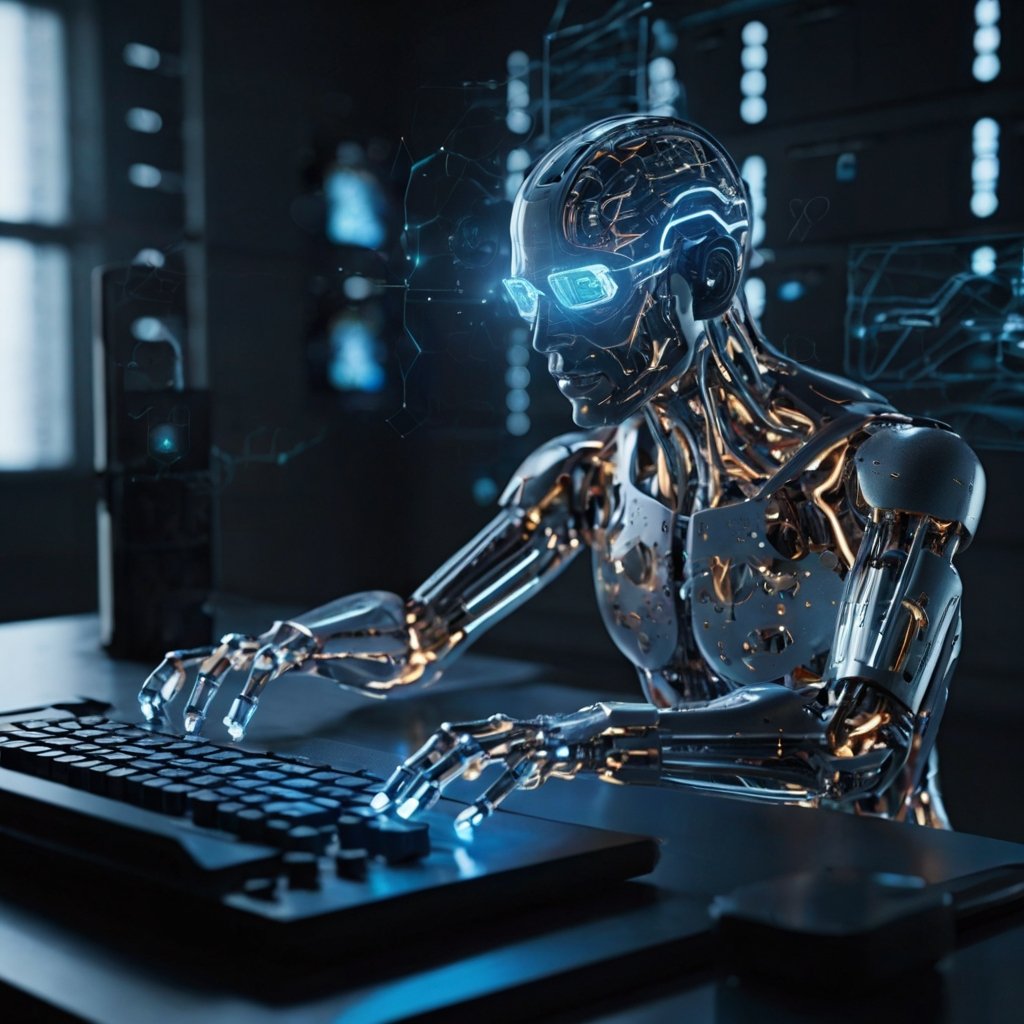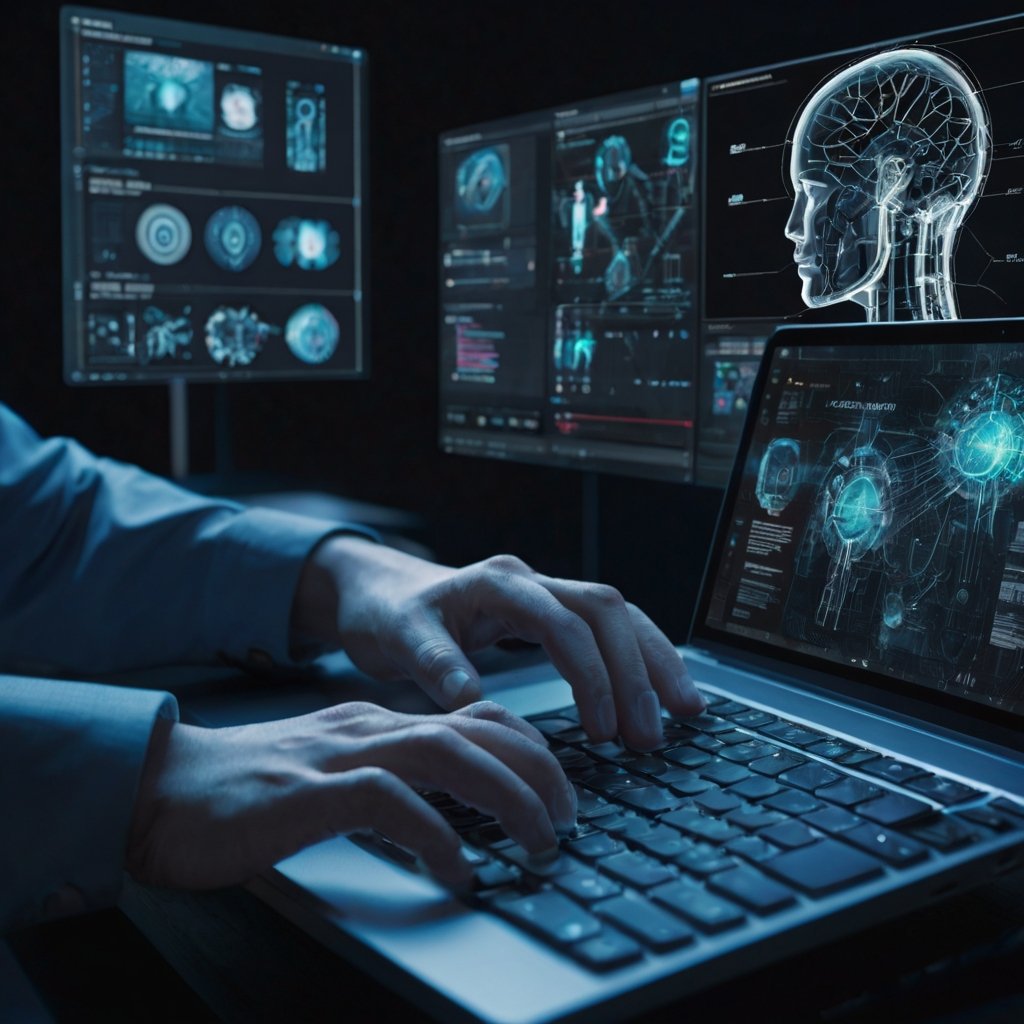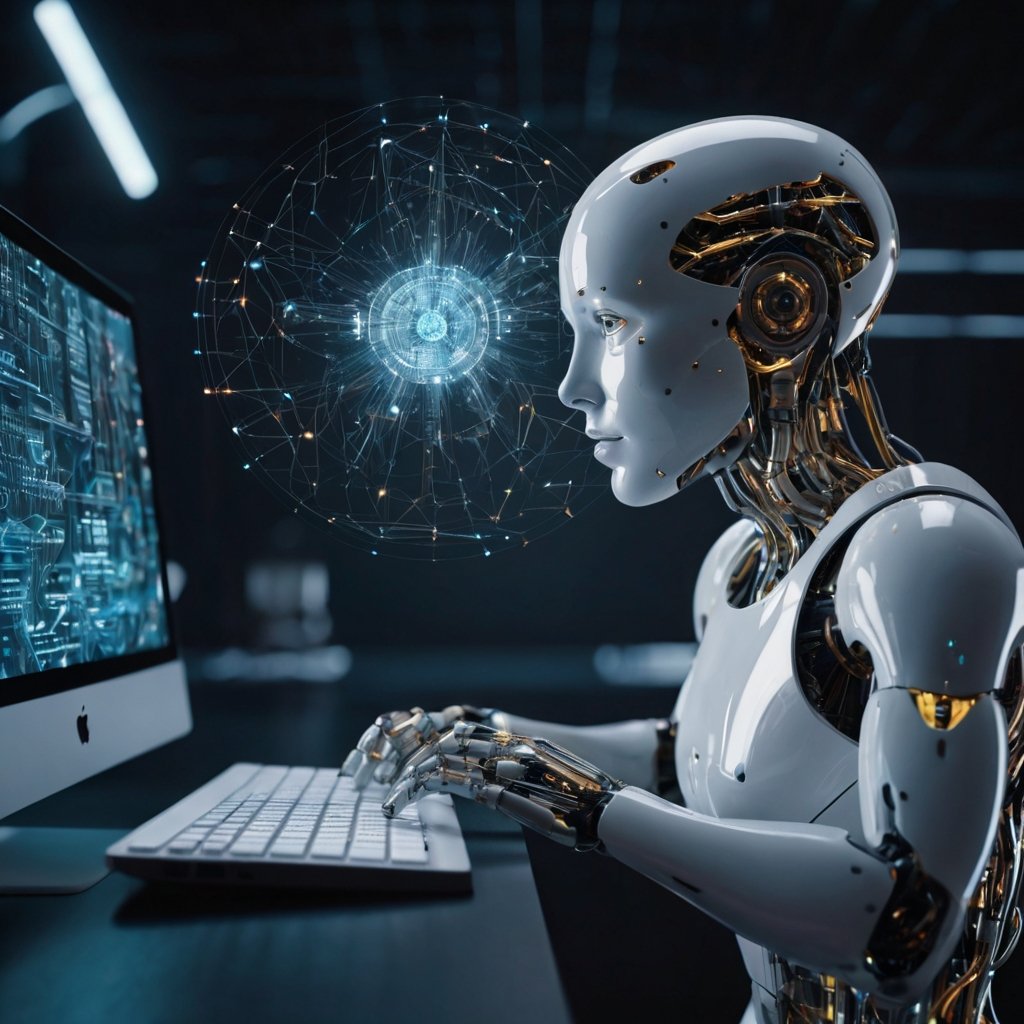AI Content Creation, The online environment has changed significantly as a result of artificial intelligence (AI), and content creation is no unique. High-quality material may now be produced using AI-powered technologies, including text, photos, videos, and audio. The question of what place human creativity has in the modern age of machines has been highlighted by this transformation. We’ll look at the advantages, difficulties, and possible effects of AI content creation in this post.
Table of Contents
Advantages of Artificial Intelligence for Content Creation
- Increased Efficiency:
AI can generate content at previously unthinkable speeds, relieving human producers of repetitive duties. - Better Reliability:
AI makes sure that tone, style, and quality remain uniform, which improves brand identity. - Improved Personalization:
AI-powered content adjusts to each user’s tastes, increasing interaction. - Cost-effective:
Higher productivity and lower personnel expenses. - Flexibility:
AI is capable of handling huge quantities of data.

some topics About this artical:
- Graphic Designer Melbourne
- How to Get Sponsored by Facebook
- Drive Social Media Lawsuit
- Video Editing Employment in Digital Age
- Web Design in El Paso
- How To Get Web Design Clients
Categories of Artificial Intelligence Content Production
- Text Generation:
AI-driven writing instruments (e.g., blogging, article writing). - Image Generation:
Images and graphics produced by AI. - AI-driven video creation:
Producing explanatory videos, for example. - Audio Generation:
Audio content generated by AI (e.g., podcasts).
AI Tools for Creating Content
- Language generation using WordLift and AI Writer.
- Prisma and Deep Dream Generator for image generation.
3.Lumen5, Raw Shorts: Video Creation - AIVA, Amper Music, Audio Generation.
Challenges and Restrictions
- Accuracy and Quality: Content produced by AI may be too simplistic.
- Originality and Creativity: AI has trouble coming up with novel concepts.
- Social Issues: Ownership, unfairness, and authorship.
4.Integration with Human Creativity: Achieving a balance between AI and human input.
Possible Effects
- Shifts in the labor market:
Human content producers adjusting to roles with AI assistance. - Content Overload:
Handling the volume of content produced by AI. - New Business Models:
Making Money from Content Generated by AI. - Regulatory Frameworks:
Creating standards for AI content.
The Best Methods for Creating AI Content
- Human Oversight:
Guarantee that content produced by AI satisfies quality requirements.
2.AL Need:
AI needs to be able to understand the context of the content.
- Constant Learning:
AI systems adjust in response to user input. - Transparency:
Make content produced by AI transparent.
Practical Uses
- Content marketing:
blog and social media pieces produced by AI.
2.Content creating
AI-generated instructional content: e-learning.
- Entertainment:
Videos and songs produced by AI. - Journalism:
Reporting with AI assistance.
Practical Sources
- Tools for Generating AI Content
- Institute for Content Marketing
- Guidelines for AI Ethics
- Courses on Digital Content Creation

AI Methods for Creating Content
- NLP, or natural language processing
- The field of machine learning (ML)
- DEEP Learning (DL)
- GANs, or Generative Adversarial Networks
- Transfer of Neural Styles
AI Tools for Creating Content
- WordLift, which generates text
- Prisma for creating images
- Lumen5 (making videos)
- Amper Music (production of audio)
- Content Blossom, or optimization of content
AI Content Creation Applications
- Content Promotion
- Online education
- Amusement (films, music)
- Reporting with AI assistance in journalism
- Handling Social Media
Advantages of Artificial Intelligence for Content Creation
- Improved Effectiveness
- Improved Uniformity
- Improved Individualization
- Economy of Cost
- Flexibility
The Difficulties of Creating AI Content
- Precision and High-quality
- Originality and Creativity
- Ethical Issues (bias, ownership, and authorship)
- Combination with Human Originality
- Criminal Justice Organizations
The Creation of AI Content in the Future
- Enhanced Customization
- A Higher Level of Automation
- Convergence with Augmented and Virtual Reality
- Improved AI and Human Collaboration
- Creation of Content Strategy Tailored to AI

The Best Methods for Creating AI Content
- Human Supervision
- Contextual Awareness
- Ongoing Education
- Openness
- Inspection of Quality
Examples of AI Content Creation in the Real World
- The AI-powered pieces in The Washington Post
- The AI-generated trailers on Netflix
- The AI-powered product descriptions on Amazon
- AI-generated music from Google
- The AI-assisted reporting of Associated Press
AI Training Programs and Content Creation
- The AI Content Creation Specialty offered by Coursera
- The AI-powered Course on Content Creation on Udemy
- The AI-powered Content Strategy Course at edX
- The AI Content Creation Tutorial on LinkedIn Learning
- The Natural Language Processing Course at Stanford University
In summary
Digital media is undergoing a revolution thanks to AI content generation, which offers unmatched efficiency, consistency, and personalization. With ongoing difficulties, there is no ignoring the advantages and long-term effects. Human content producers must change with the times and accept AI-assisted jobs and produce engaging, high-quality material.
FAQs
Can AI take the role of human content producers?
A: Artificial intelligence improves human creativity, but it can’t match emotional depth.
How accurate is AI Content Creation produced ?
A: Training data and human supervision help AI-generated content get better.
Can AI Content Creation produce unique content?
A: AI is good at maximizing established ideas but it struggles with coming up with new ones.

